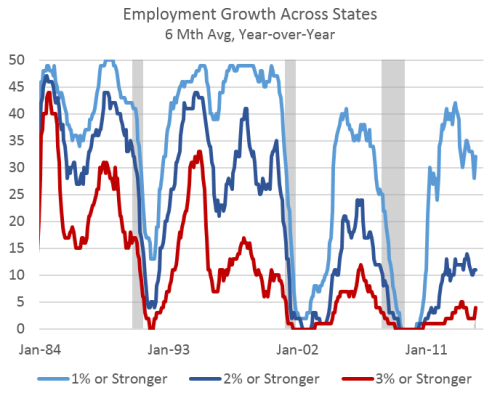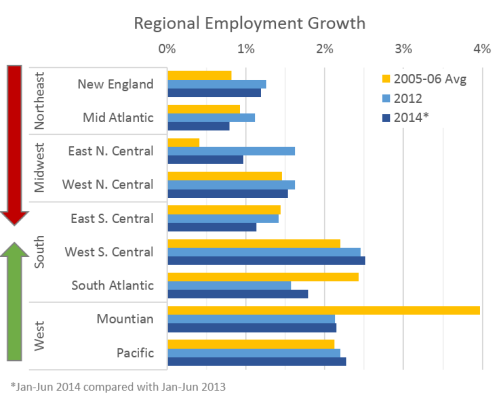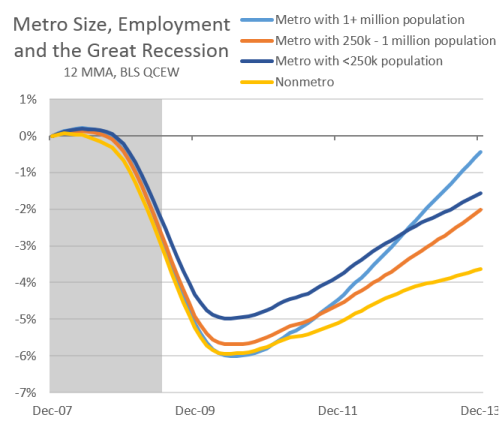![]()
By Josh Lehner
Oregon Office of Economic Analysis Blog
Besides just stronger national growth, another way for top line U.S. job figures to improve is for more states or regions to share in the recovery. Back in December I noted that the Northeast and Midwest were growing much faster than their housing boom rates, while the South and West were lagging (in particular given low population growth and the housing bust). Expectations were that the South and West would accelerate moving forward, but in order for national figures to improve the Northeast and Midwest would need to hold onto those stronger rates of growth. So how are things looking today? Well, the acceleration has come along the West Coast and in the South but much of the Northeast and Midwest has slowed down. Map of Census Regions and Divisions.
This leaves us with a national job growth figure that is slightly stronger so far in 2014 than in recent years but much of the movement in the U.S. employment picture is happening below the surface, down at the state and county level. As seen below, the number of states experiencing job growth of 1 or 2 or 3% hasn’t really changed. However this is due to the shifting nature of job growth across the country. The only states to see sustained acceleration in job growth (improvements of 1 percentage point or more, relative to 2011-12 rates) are Delaware, Florida, Nevada and Oregon. The latter three of which were hard hit by the housing boom and bust and as housing rebounded in 2013, growth picked up. However these states’ improvement was offset by deceleration of 1 percentage point or more in Alaska, Michigan, N Dakota and Virginia. As evidenced in the graph below, the geographic footprint of the recovery really is not broad based with just a dozen or so states experiencing job growth of 2% or more.
 However, the one portion seeing stronger rates of growth, and acceleration are the large metropolitan areas, see here for more details.
However, the one portion seeing stronger rates of growth, and acceleration are the large metropolitan areas, see here for more details.
The questions becomes, whether or not we expect the medium, small and rural economies to pick up and whether or not the large metros can continue to grow at 2% or more in terms of employment. I think the answers are yes, and yes, from a fundamental point of view — ignoring potential macroeconomic shocks. As housing and government continue to improve (the two large weights on the recovery) this will help medium, smaller and rural economies as these industries play a disproportionately large role here, relative to bigger cities. In terms of the large metros, many of those good economic things you hear about — agglomeration effects, knowledge spillovers, clustering, etc. — happen in specific locations, which are usually bigger cities. These impacts, along with the continued urbanization of the population result in a relatively bright outlook for the country’s largest metros.
Disclaimer: Articles featured on Oregon Report are the creation, responsibility and opinion of the authoring individual or organization which is featured at the top of every article.




